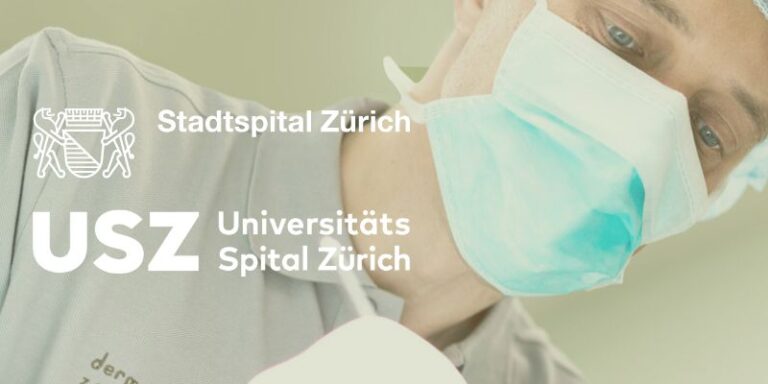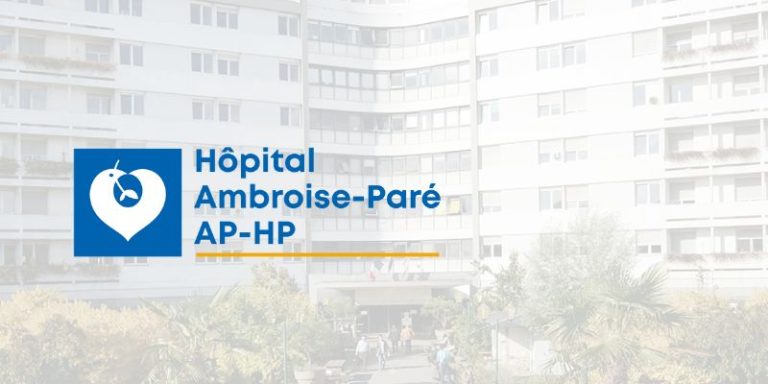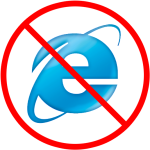MOHS Fellowship
One in every three diagnosed cancer is a skin cancer; therefore, dermatologists should be at the forefront of leading techniques for the care of skin cancer patients. One such technique is Mohs Micrographic surgery (MMS) also known as margin-controlled excision; a specialised surgical technique that aims to completely remove the skin cancer and leave as much healthy skin tissue as possible.
While largely diffused in countries like the US and Australia, the availability of Mohs Micrographic Surgery in Europe is very limited. The EADV aims to expand the number of European Mohs surgeons and offer the best possible care for skin cancer patients.
EADV Mohs Fellowship: useful information
Benefits of a Mohs Fellowship
- Six months of certified training with top MMS surgeons; the start date will be discussed with the awardee.
- 18.000€ funding to cover travel and accommodation costs.
- Possibility to fulfill the criteria for ESMS certification: the fellow is encouraged to fill a logbook (Resources – esms-mohs.eu) with all the Mohs procedures where he/she took part during his/her Mohs fellowship. A minimum of 100 Mohs surgeries supervised by a ESMS Certified Member is required to receive the ESMS Mohs certification and become ESMS Certified Member (Become a member – esms-mohs.eu).
2024 Successful applicants
Name | Home Institution | Mohs Training Centre |
Roshan Peroz | Uppsala University Hospital/ Akademiska sjukhuset i Uppsala Uppsala, Sweden | Erasmus University Medical Center, Rotterdam (NL) |
Gloria Baeza Hernandez | HOSPITAL UNIVERSITARIO DE SALAMANCA Salamanca, Spain | Valencian Institute of Oncology IVO, Valencia (ES) |
Michaela Anca Jian | QUALIMED Brasov, Romania | Leventer Center (RO) |
Celine Dandoy | Hopital Universitaire de Bruxelles (Erasme) Brussel, Belgium | Ambroise Paré University Hospital (F) |
Alexandra Denisa Oprea | Elias Emergency University Hospital Bucharest, Romania | University Hospital Zürich (CH) |


Mohs Fellowship locations


Stadtspital Zürich & University Hospital Zürich
Requirements
- EADV membership
- Must have completed their residency in dermatology and must be board-certified dermatologists in a European country.
- At least 2 years experience in dermatosurgery
- ESMS associate membership
- Fluency in English language. Only applicants who are also fluent in German (level B1) will also be able to treat patients without direct supervision.
- EU / EFTA citizenship, proof of no criminal record
- Approval by Swiss authorities in advance. Switzerland is not a member of the EU; thus, for awardees from other countries than Switzerland the approval includes: recognition of the state examination and specialist examination, registration in the register of medical professions, a work permit, a license to practice the medical profession, and a residence permit for 6 months.
- The awardee must have the possibility to put MMS into practice after finishing the fellowship either by opening a Mohs unit or by contributing to an existing unit in an academic hospital-based department of dermatology within Europe.
Programme description
The duration of the fellowship is 6 months and must be completed in one consecutive period. Fellows will be given the opportunity to participate in a high volume of frozen section Mohs procedures, including the lab procedures, as well as assist in some slow Mohs and other dermatosurgical procedures.
The fellowship will take place in 2 centers: Department of Dermatology, University Hospital Zurich, and Institute of Dermatology, Stadtspital Zürich Europaallee. The fellow will be able to participate in > 200 Mohs cases under supervision of the program director or another ESMS-certified surgeon, the fellow will be able to operate some of the cases as leading surgeon. A majority of the cases will include flap or graft reconstruction. > 50 complex cases can be expected. Furthermore, > 20 cases of slow Mohs will be performed. The fellow will be involved in reading of pathology slides of all cases of frozen section Mohs surgery.
Infrastructure: in both venues there is a dedicated lab within easy walking distance in the same building complex as the operating rooms, with lab technicians trained in Mohs surgery. In both venues there are > 2 operating rooms fulfilling local requirements for dermatosurgical procedures, including flap and graft reconstructions. Some hospitalized patients at the University Hospital Zurich will be operated and there is a documented collaboration with other specialties as well as the possibility to discuss patients at a tumor board (University Hospital Zurich).
Monday/Thursday: participation in 3-4 Mohs cases/day at University Hospital Zurich (Prof. J. Hafner)
Tuesday/Wednesday: participation in 4-6 Mohs cases/day at Stadtspital Zürich Europaallee (PD S. Läuchli)
Friday: participation in large dermatosurgery cases for in-patients at University Hospital Zurich (Prof J. Hafner)


Mohs Surgery Clinic, Dr Leventer Centre
We are an expert center in Dermato-oncology and Dermato-surgery with more than 1400 cases of skin cancer patients per year and more than 700 Mohs Micrographic surgeries per year. The clinic started to perform MMS in 2007 being a pioneer in Romania The center has been accredited in 2017 by the ASDS for our International fellowship Mohs program.
Requirements
- EADV member from an Eastern European country
- Must be a board-certified dermatologist with basic surgical experience
- Must have professional insurance
- Must speak fluently in English
- The awardee must have the possibility to put MMS into practice after finishing the fellowship either by opening a Mohs unit or by contributing to an existing unit in an academic hospital-based department of dermatology within Europe.
Programme description
- 6 months duration.
- Mohs procedures 3 days per week, with 3 different supervisors
- You will have the opportunity to experience different cases such as BCC, SCC, LMM, or rare tumors treated with MMS; for large and rare tumors like DFSP you will be able to perform Slow Mohs.
- Initially you will be involved in surgical procedures as second surgeon and finally you will operate under supervision. The minimal number of procedures you will be able to see in the clinic will be 150, of which 50 you will be involved directly. You will understand all types of surgical flaps or graft reconstruction.
- You will be able to learn how to organise the lab, to train the technician and to review the slides with a dual-head microscope with our dermatopathologist. You will be involved in reading pathology slides of all cases of frozen sections from our archive.
- For difficult reconstructions, you will observe our multidisciplinary team including a plastic surgeon operating.
- You will be asked to keep a logbook, where you will report and present the cases you observed during your training. You will be asked to present a difficult case you observed and discuss the case from beginning until the end (how you solved the problem, how you operated and prepared everything necessary to read the slides).


Erasmus University Medical Center
The Erasmus University Medical Center (Rotterdam, The Netherlands) is among the largest MMS centres in Europe. They perform approximately 1700 MMS procedures annually and have a formal training program for MMS.
Requirements
- EADV membership
- Must have completed their residency in dermatology and must be board-certified dermatologists in a European country.
- Sufficient knowledge and skills in surgery
- HBV and SARS-CoV-2 vaccination
- The awardee must have the possibility to put MMS into practice after finishing the fellowship either by opening a Mohs unit or by contributing to an existing unit in an academic hospital-based department of dermatology within Europe.
Programme description
- 6 months duration.
- Mohs procedures 5 days per week, with 5 different supervisors and a dedicated team of nurses and lab technicians.
- We usually perform 6 Mohs procedures a day (75% BCC, 25% SCC and occasionally rare tumors). Two Mohs fellows are supervised by one Mohs surgeon, each fellow performs 3 Mohs procedures a day. We review the slides together (with a dual head microscope). The fellow will learn performing Mohs in all its aspects including different types of reconstructions and will get an extensive training in histology.
- We also perform Mohs for rare tumors such as Merkel cell carcinoma, sebaceous carcinoma, dermatofibrosarcoma protuberans.
- We have specially trained Mohs supervisors and an ophthalmologist who operate tumors on the eyelids.
- The minimal amount of cases that a Mohs fellow should perform is 200. The fellow will have 2 exams: one halfway and one at the end of the training. The first exam consists of assessing the slides of 10 Mohs cases and the final exam consists of 20 cases. The Mohs fellow should pass the final exam in order to get the Mohs certificate.


Ambroise Paré University Hospital
The General and Oncologic Dermatology Department of the Ambroise Paré University Hospital, located in Boulogne-Billancourt, near Paris, is an expert center in dermato-oncology. The department was a pioneer in France in the implementation of the Mohs technique in 1999. Several practitioners are trained in the frozen Mohs and slow Mohs technique in our department.
Requirements
- EADV membership
- Must have completed their residency in dermatology and must be board-certified dermatologists in a European country.
- HBV and SARS-CoV-2 vaccination
- Professional liability insurance with coverage of the medical activity in France
- Be employed by the hospital. Administrative details of the employment will be discussed with the awardee.
Programme description
The fellow will benefit from an initial theoretical training (1h course) to explain the different techniques of micrographic surgery and their indications.
The fellow during his 6 months of training will:
- Participate in multidisciplinary consultation meetings with patients coming for the initial management of their skin cancer. These meetings take place on Friday mornings.
- Operate on patients, under the supervision of dermatologist surgeons trained in these techniques, after having attended a few procedures in order to put into practice the advice learned during an initial period of 2 sessions.
Frozen Mohs surgeries are performed once a week on Thursdays. Slow Mohs surgeries are spread throughout the week (Monday to Friday), between standard and Mohs surgeries (Thursdays). The center has two operating rooms.
Pathologists analyze the successive layers in cryo-frozen or paraffin and not the dermatologist surgeons themselves. Pathologist and technicians are specialized this technique. The fellows will learn how to analyse histological slides, he/she will be trained by our pathologist.
Ex-vivo confocal microscope (VIVASCOPE) is available in the center to perform digital histological sections, which are analyzed jointly by the dermatologist and the pathologist. The fellow will be able to benefit from training in this new tool.


Fundación Instituto Valenciano de Oncología
The Fundación Instituto Valenciano de Oncología (FIVO) (ivo.es/en) is a private, non-profit organization whose assets and resources are entirely devoted to the fight against cancer in all its aspects: prevention, diagnosis, treatment, research, and teaching. It was founded in 1976, as specialized center in cancer patient care. It is a national and international benchmark in oncology, as accredited by its position as number 50 in the World’s Best Oncology Hospitals ranking, and collaborates with the public health system through a joint action agreement.The Department of Dermatology is a monographic skin cancer unit with more than 30 years of experience in Mohs surgery and dermatological oncology. They perform approximately 600 Mohs micrographic surgery procedures annually and have a formal training program for Mohs micrographic surgery (MMS).
Requirements
- EADV membership
- Must have completed their residency in dermatology and must be board-certified dermatologist in a European country.
- Sufficient knowledge and skills in surgery
- Membership in the local College of Physicians (Colegio Oficial de Médicos). This entails undergoing the homologation process of the medical degree, if not already issued by Spanish authorities, and presenting a B2 Spanish language certificate, if not of Spanish native language. More details of this process will be discussed with the awardee.
- Be employed by the hospital. Administrative details of the employment will be discussed with the awardee.
Programme description
It is scheduled for a 6-month period, although it can be modified according to the expectations.
Scope of Practice and Training:
Micrographic surgery and dermatologic oncology is the subspecialty of dermatology concerned with the diagnosis, treatment and research of malignancies of the skin. A particular emphasis is the surgical and medical management of patients with high-risk cutaneous malignancies.
The FIVO Mohs Surgery fellowship program is primarily aimed at learning in:
- Cutaneous oncologic surgery with special focus on Mohs micrographic surgery and slow Mohs technique
- Cutaneous reconstructive surgery
- Education in clinical dermatology and dermatopathology of cutaneous malignancies
- Dermatologic oncology, which incorporates knowledge of the clinical and pathologic diagnosis, staging, and treatment options for patients with cutaneous malignancies.
Education programme
Working hours at the center are from 8am to 5pm, from Monday to Thursday and from 8am to 3pm on Friday.
Fellows assume graded and progressive responsibility in patient care, according to demonstrated knowledge, skills, and competencies.
Fellowship training takes place at the FIVO. During training, the fellow will be involved in Mohs Micrographic surgery and complex reconstruction with 7 experienced Mohs surgeons in diverse setting. The daily work schedule depends on the circumstances in the operating room. Depending on the staff, at least one day a week the focus will be on the histological examination of specimens, while the rest will be on the surgical procedure, including the sample processing. During the first month, the plan is to get to know the working mechanics of the surgery in order to be progressively and actively involved in the procedures accordingly.
During the 6 months training program, fellows should participate in a minimum of 200 cases, and complete a minimum of 100 cases of Mohs surgery as primary surgeon under supervision, on different skin tumors, which are the requirements to get the certificate of Mohs surgeon by the European Society for Micrographic Surgery. Both Mohs techniques, frozen and paraffin fixed tissue, are used. At least there are five work days weekly in surgery room (Monday to Friday 8:15h-15:00h).
Fellows participate in two regular, weekly tumor boards (one of melanoma and another of non-melanoma cancer, that are scheduled on Friday 08:15h and Tuesday 08:15h, respectively), as well as in the clinical session of the Department on Fridays (9h-10h), in which the fellow is expected to have an active participation, presenting at least once a month on a topic related to dermatological surgery.
Fellows participate in the reading of microscopic slides as well as in a weekly pathology session with the Department of Pathology at the IVO (Wednesday at 14:00h)
There is a formal education to set up and operate a Mohs frozen section laboratory, as well as daily interactions that provide education in the supervision and training of histotechnicians (Monday to Thursday during the surgery time).
Research opportunities
Clinical research project: At least one clinical research project on Mohs surgery or dermatologic oncology with the program director or dermatologist of the FIVO department as the mentor is mandatory. Additional research is encouraged.
Publication: The fellow is expected to submit at least one paper with the program director for publication in a peer-reviewed journal before completion of their training.
National Presentation: The fellow is encouraged to submit an abstract for a national meeting prior to the completion of their training.
How to apply for the Mohs Fellowship from EADV
Read carefully the EADV Mohs Fellowship guidelines
The application is to be submitted electronically through the MyEADV portal.
All documentation requested shall be collected and submitted to the EADV by the applicant and must be in English. It consists of three parts:
- Candidate’s CV and motivational letter in English
- Copy of your Medical Diploma
- Recommendation letter from your head of department


Internet Explorer is not supported.
Please make sure you visit MyEADV and start your application from supported browsers such as Chrome, Microsoft Edge, Mozilla Firefox, Safari, and Opera
Applications must be submitted online only through the myEADV portal.
The Committee does not provide a detailed review for non-approved fellowships..

